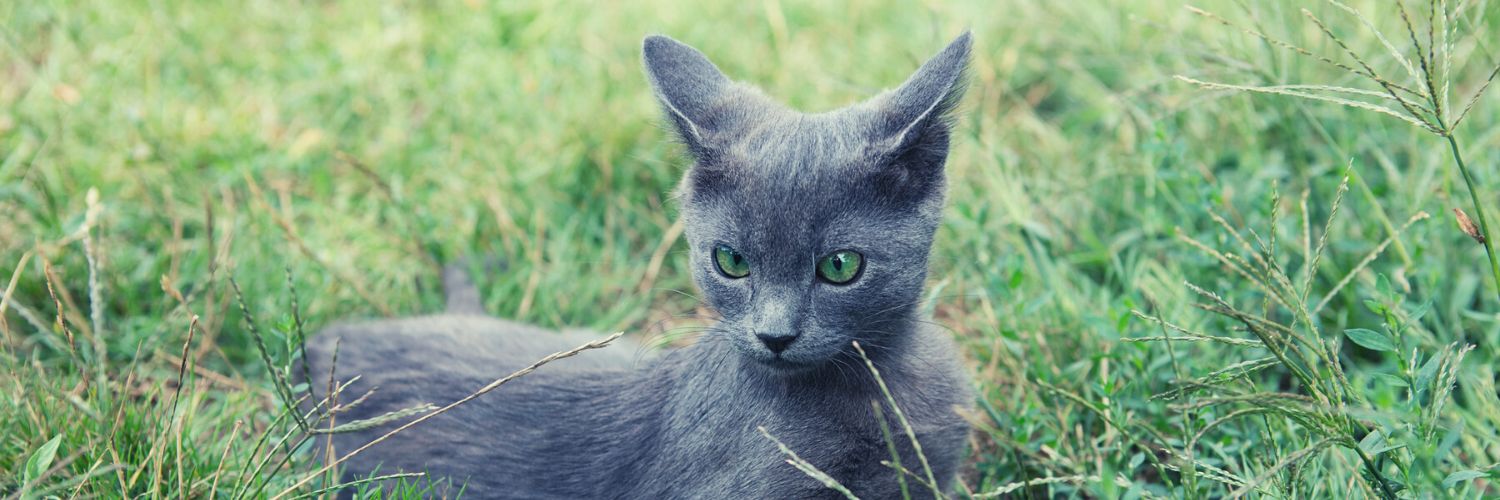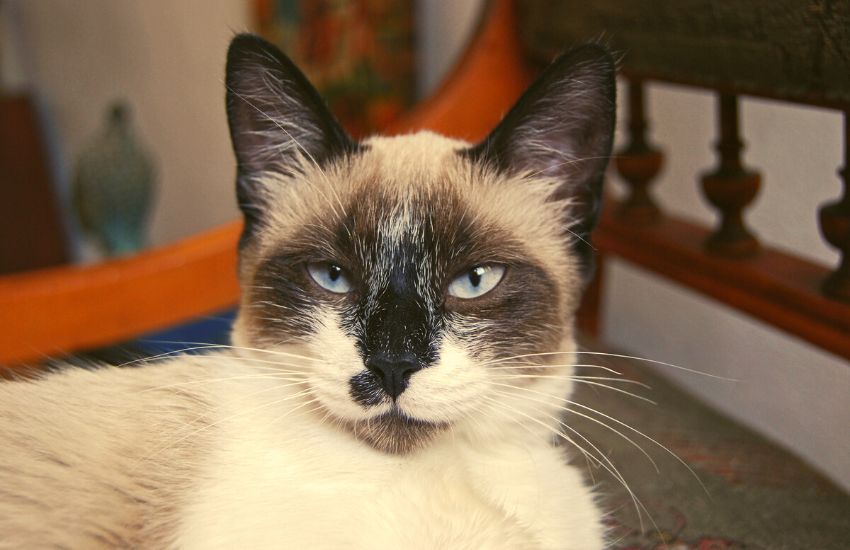shelter pets in need
Each order helps pets in need

Did you know that cat allergies are twice as common as dog allergies? If you've always wanted to adopt a feline friend but suffer from cat allergies, these cat breeds are great.
Hypoallergenic cat breeds are considered a low risk of causing an allergic reaction to their human. This means that they have fewer allergens than most cats.
They are especially good for folks who love cats and want one or two but can't seem to be around one without breaking into sniffles, sneezes, hives, itchy eyes, or even asthma attacks.
What an allergic person reacts to are the proteins in the cat's skin and saliva. When the cat grooms itself, its skin flakes, and dander flies into the air, which lands on the skin and other things in the room. This outgoing dirt is then breathed into the respiratory tracts of nearby humans.
A person who’s allergic will react, but doctors don’t know why some people are allergic to cats and others aren’t. By the way, a cat doesn't have to be in the house for this to happen. The allergenic proteins are potent for months after a cat has left the premises.
One of these proteins is the Fel d1 protein (all cats produce this protein), and the two cats that produce less of this protein than other cats are the Siberian and Balinese. Male cats have also turned out to produce three to five times less protein after they have been neutered, causing fewer allergic reactions.
Someone wrote that cats are angels with fur, and it’s very true. They are beautiful but mysterious and otherworldly. A person knows that their dog loves them. Their cat? Who knows? Who cares? The cat sticks around and is a source of pleasure.
As one Pickles cartoon put it, Roscoe, the dog, watches his person feed and take care of him daily and thinks the human must be a god. When Muffin the cat notices how her person takes care of her, she thinks that she, the cat, must be a god.
Here is a list of some cute cats for people with allergies:
Possessing a playful personality and often described as 'a monkey in a cat suit', this American breed scores big in the hypoallergenic department! With their short, curly fur less prone to shedding than most, these critters significantly reduce allergen buildup in your home.
Known for their elf-like ears and space-alien appearance, Devon Rex cats are more than just their distinctive look. They have a penchant for mischief, an insatiable curiosity, and a hearty appetite to match. If you're after a spunky cat that doesn't make you sneeze non-stop, the Devon Rex might just be your spirit animal.

Next on our list is a feline with a royal pedigree - the Siamese. Graceful, elegant, and oh-so-vocal, these cats can charm the socks off anyone, even those with allergies! Their short, fine coat doesn't shed much, which, coupled with regular grooming, keeps the allergens in your domain to a bare minimum.
But wait, there is more to these Asian beauties than just being hypoallergenic! These cats are social butterflies, thriving on interaction and companionship. With their striking blue almond-shaped eyes and color-point coat, they are a feast for the eyes and a friend to the nose!
Lastly, let's roll out the red carpet for the Oriental Shorthair. This breed, with its short and sleek coat, is a top contender. Regular brushing also aids in keeping those pesky allergens at bay.
On the personality front, prepare for a toss-up between a comedian and an overly attached, loving spouse. Never short on energy or affection, Oriental Shorthairs are notorious cuddle bugs who also enjoy showing off their acrobatic skills. So, if you're seeking a hypoallergenic kitty that's equal parts entertainer and lovebug, the Oriental Shorthair is the way to go!
This cat reminds people of the old-fashioned apple-head Siamese cat with darker points on paler fur. In the past, the Balinese were chunkier and had a much longer coat than the Siamese cat. Now, it’s much cleaner, though it still has a long coat and bushy tail.
It doesn’t shed much and has a single coat that feels silky when touched. It has a lovely, wedge-shaped head, brilliantly blue eyes, and large pointed ears. It comes in seal point, lilac point, chocolate point, and blue point types.
It’s also a long-lived cat and can live between 18 and 22 years. The Balinese cat shares another trait with the Siamese in that it's vocal and demands attention. It loves to interact with its humans.
This small, frolicsome cat likes few things better than to be the object of its human's attention. It is affectionate and loves to play. Fetch is just about its favorite game.
Most cat's fur has a total of three layers: a top layer of "guard hair," a middle layer of "awn hair," and a bottom layer of "down hair" make up the fur of most cats. The bottom layer of the Cornish Rex is downy. Unlike other rex cats, this implies they shed far less hair and are thus less likely to distribute allergy-inducing proteins.
Though some folks think that the Cornish Rex is a bit odd-looking, it reminds other people of the sacred cats of ancient Egypt. It has unusual wavy fur, a head shaped like an egg, enormous ears, and spindly legs.
The Cornish Rex comes in many colors, doesn’t shed its curly fur, and produces fewer allergens than other breeds. Perfect for humans with cat allergies!

Sphynx cats are curious and sweet-natured but very energetic; this medium-sized to large cat resembles the Cornish Rex, but it’s hairless or, at most, has a fine down over its body. It is well-muscled, with huge bat ears, and is available in many colors and patterns. It has a characteristic pot belly, a hearty appetite, and a loud voice.
Sphynx cats need to be with their humans, like to perform, and don’t do well when left alone for long stretches. They produce fewer allergens compared to other cat breeds. Great for people who want clingy cats and people with allergies.
They are a hypoallergenic breed, and the lack of cat hair means that the Sphynx cat needs to be swabbed down once a week to cleanse the skin of the sebaceous oils that would otherwise be absorbed by fur.
This robust but elegant cat is unusual among cat breeds people are unlikely to get allergies from. It has a thick, double coat with hairs at a 45-degree angle. That means if a person traces a pattern into the coat with their finger, it will stay there until it is smoothed away.
As the name suggests, the Russian Blue Cat has a lush, dense coat that is blue and shimmers like some precious metal in the right light. The eye color is also striking. As a kitten, they're yellow, but they turn to stunning emerald green as the cat ages. Just like in other cats, Russian Blue Cats shed, but not as much.
The Russian Blue enhances its beauty with a sweet temperament, and some owners say that the cat even has a subtle and mysterious smile. It loves to play fetch and craves the attention of its people.
This kitty can be left home alone for a while but is happy to be a cherished family member when everyone is together. If you have cat allergies but want a cat, the Russia Blue is a good fit for you.
This is a big, hefty cat that can weigh as much as 26 pounds. Despite being one of the non-allergenic cat breeds, it has a lustrous, heavy coat and a thick undercoat. Its name gives a clue as to why it has so much fur.
It’s ideal for folks who adore big, furry cats but are allergic. The Siberian is an affectionate and smart cat and likes to play around in water.
Javanese cats are sleek and elegant; they are not from Java but are also a member of the Siamese family. This means it has vivid, slanted blue eyes, is loud, and loves to be loved by its humans.
It also loves to eat and needs to be kept active. This isn’t hard, for the Javanese is easy to train and love games. It has more color than the Balinese or Siamese cats and can be red, tortie, lynx, or cream. Javanese cats are one the best cat breeds for people with kitty allergies.

The patterns on the coat of this cat make people think that it is not quite tame. Of the non-allergenic cat breeds, the Bengal house cat is the only one getting by successfully crossing a wild cat, the Asian leopard cat, with a domestic cat.
The result is a big, muscly cat with a broad head, big, round mascaraed eyes, small ears with round tips, and a dense, soft coat with leopard spots. Not only that, a lot of these cats have a characteristic called glittering, where the coat looks like it was dusted with gold.
Bengal cats are not particularly cuddly but are energetic and like to be around their humans, especially children. They are also very intelligent cats. Like the Siberian cat, this cat likes water and even likes to fish. So, if you have cat allergies, this cat is good for you.
Always remember that daily brushing, especially for cats with thick coats, will help keep your cat's coats healthy, especially the undercoat, and minimize allergens. This is a must-have for your new kitten checklist. You also won't have to worry about too much fur getting on your favorite cat lover clothes.
People who are allergic to cats should not despair. There’s many beautiful, intelligent, and affectionate hypoallergenic cats. Here at Animal Hearted, we can't decide which is our favorite; they are all so cute!
Which one is your favorite?
While they produce fewer allergens, there are no truly hypoallergenic cats. However, they may be more tolerable for people with allergies.
While they tend to shed less, no cat breed is entirely free from shedding. However, some cats may shed less than others.
It isn't easy to eliminate cat allergens from a living environment. However, certain measures can be taken to minimize exposure, such as regularly cleaning and vacuuming, using air purifiers, and keeping the cat's living space clean.
Comments
Leave a comment